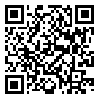Volume 6, Issue 7 (2016)
LRR 2016, 6(7): 219-236 |
Back to browse issues page
Download citation:
BibTeX | RIS | EndNote | Medlars | ProCite | Reference Manager | RefWorks
Send citation to:



BibTeX | RIS | EndNote | Medlars | ProCite | Reference Manager | RefWorks
Send citation to:
Mousavi S H, Amoozadeh M, Rezai V. Analysis of the Word ‘Didan’ Based on Frame Semantics. LRR 2016; 6 (7) :219-236
URL: http://lrr.modares.ac.ir/article-14-10559-en.html
URL: http://lrr.modares.ac.ir/article-14-10559-en.html
1- Ph.D. in General Linguistics, University of Isfahan, Isfahan, Iran
2- Professor of Linguistics, University of Isfahan, Isfahan, Iran
3- Associate Professor in General Linguistics, University of Isfahan, Isfahan, Iran
2- Professor of Linguistics, University of Isfahan, Isfahan, Iran
3- Associate Professor in General Linguistics, University of Isfahan, Isfahan, Iran
Abstract: (6730 Views)
This paper sets up to investigate the word didan (‘to see’) based on the frame semantics. The model provides a scientific tool enabling us to explore how the sense of words can be traced back through human’s experiences and background knowledge. The main purpose of this paper is to clarify delicate meaning distinctions, which are mainly overlooked in dictionaries. To this end, we started this study by searching different texts and corpora in order to find the semantic frames for didan from one hand, and to extract differences between the verb didan and the other partially synonymous verbs such as moshahede kardan (‘to observe’), and tamasha kardan (‘to watch’), on the other hand. Then, we try to determine how polysemous verb of didan is analyzed in terms of semantic frames. By analyzing data, we have found out that the relationship between different frames with that of Perception frame is the cause of polysemy. Furthermore, the partially synonymous verbs are differentiated from the verb “didan” based on ‘aim’, ‘target’, and other variables. Last but not least, we have put forward a model showing how didan and its different frames are related and how partially synonymous words are differentiated from it.
| Rights and permissions | |
 |
This work is licensed under a Creative Commons Attribution-NonCommercial 4.0 International License. |






